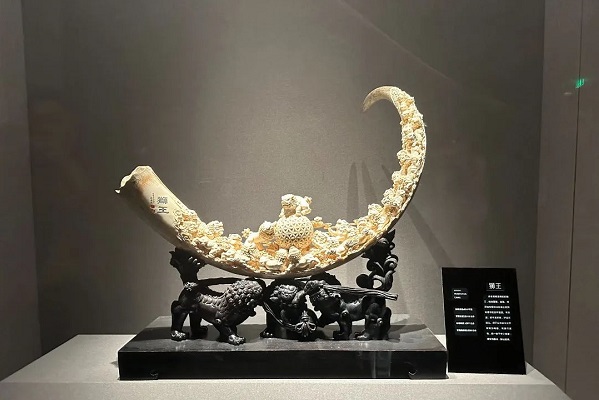Tusk Carving Art Museum in Maoming showcases beauty of Chinese tradition
- (guangdong.chinadaily.com.cn/maoming)
- Updated: 2023-10-08
The Xinyi Branch of the China Tusk Carving Art Museum - China's first mammoth tusk carving art museum – opened to the public on Oct 1 in Xinyi, a county-level city of Maoming.

A view of the tusk carving art museum at night. [Photo/ WeChat account: maofabu]
It showcases 600 works by internationally-renowned mammoth tusk carver Zhu Zhongsheng from Xinyi.
The woolly mammoth lived in cold regions of China such as Shandong, Inner Mongolia, and Ningxia, where fossils of the woolly mammoth have been found. The woolly mammoth was the largest elephant species during the Pleistocene epoch. It is believed to have gone extinct around 1650 BC.
The museum is considered the largest, most technologically advanced, and most artistically valuable collection of mammoth tusk carvings in China.
With three floors and eight exhibition halls, the museum displays various types of mammoth tusk carvings.
By incorporating intangible cultural heritage carving techniques into mammoth tusks, the museum showcases Chinese traditional culture and tells Chinese stories through art.
Since its opening, the museum has attracted a large number of visitors. By 3:00 pm on Oct 1, more than 800 people had visited, and it was expected that there would be about 1,500 visitors throughout the day.
China has comprehensively banned the tusk trade since 2018. This measure aims to protect the habitats of endangered species and maintain ecological balance. Therefore, the exhibited works at the museum are made from legally obtained tusk materials acquired in earlier years.

A vivid tooth carving is on display in the museum. [Photo/ WeChat account: maofabu]


